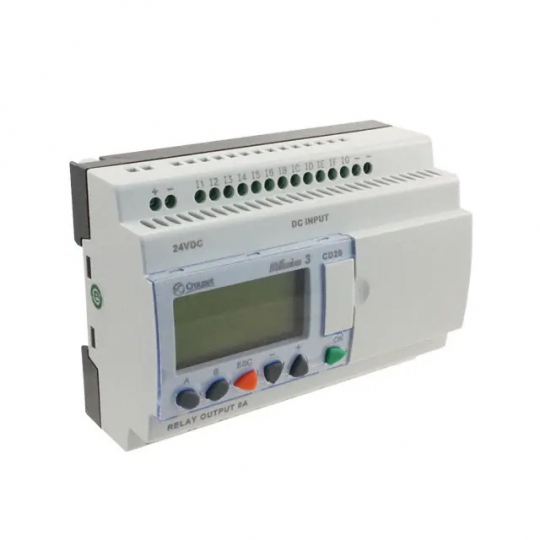 lab@motestainstruments.com | Civil and Mechanical Engineering Lab Equipments India China
lab@motestainstruments.com | Civil and Mechanical Engineering Lab Equipments India China

Code: MOT-CNT-0005
Programmable Logic Controller 12IN/8OUT.
It must be a powerful and flexible system that controls a wide variety of devices and meet the
different needs of the automation industry.
The LOGO! is a universal logic module that must integrate:
• Controls
• Operator and display panel with background lighting
• Power supply
• Interface for expansion modules
• interface for a memory card, battery card, combined memory/battery card, LOGO! PC cable
or USB PC cable
• Interface for an optional text display (TD) module
• Preâ€configured standard functions, for example, on†and offâ€delays, pulse relay and softkey
• Timers
• Digital and analog flags
After loading the program, the LOGO! unit (CPU) shall contain the logic required for the
monitoring and control devices used in the application.
The CPU must monitor the inputs and must change outputs according to the logic of the user
program, which can include Boolean logic, counting and timing, complex math functions and
for communicating with other devices.
To communicate with the programming device, the CPU must have available an integrated
slot. Through it and with a USB PC cable the CPU shall communicate with the PC.
The front panel shall include:
• Output dc voltage: 24V available on two 2mm terminals
• Power supply socket: singleâ€phase from mains
• 12 switches (3 positions: unstable/off/stable) on 1 column for PLC inputs enabling
• Twelve 2mm terminals for inputs
• Twelve 2mm terminals for inputs (common)
• Sixteen 2mm terminals for 8 relay outputs (2 for each)
The module must include:
• Power supply (LOGO!Power 24V/1.3A)
• I/O digital onboard: 8 inputs (24VDC) / 4 outputs (relay, 10A)
• Additional digital I/O (DM8 24R): 4 inputs (24VDC) / 4 outputs (relay, 5A).
• USB PC cable
• LOGO!Soft Comfort (SW)
• Connecting cables
The software must provide standard programming languages that shall allow the development
of the control program in a practical and efficient way.
• LAD (ladder diagram) must correspond to a graphical programming language that shall allow
to represent the program as electrical circuits.
• FBD (function block diagram) must correspond to a programming language based on the
graphic symbols of Boolean algebra.